How To Create A Professional Portfolio
Professional portfolio provides a visual depiction of your work to the recruiters. As time is progressing, new ways of showcasing the work are also emerging. The portfolio is one of them.
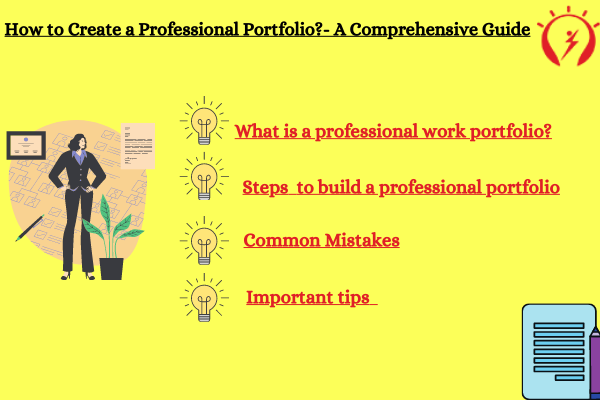
Though, resumes and cover letters are an inevitable part of the job search process. However, providing a professional portfolio can help you stand out.
Recruiters receive hundreds of job applications every day. This implies that they don't have enough time to review every line of the documents. Therefore, a professional portfolio can hook them because of its uniqueness, unlike the rest.
What is a professional work portfolio?
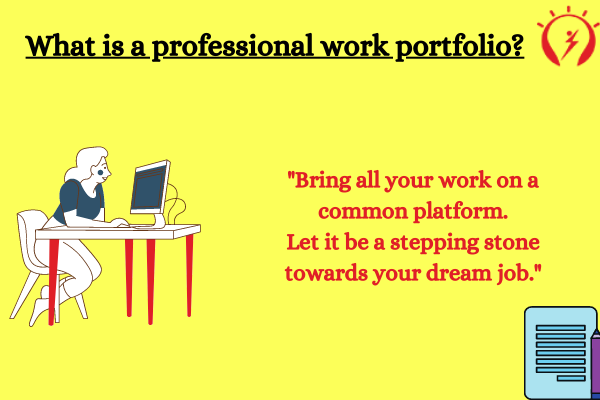
A professional portfolio can be thought of as your work squeezed on a common platform. Hence, in simple words, it is a collection of your past work illustrated visually. This provides the employers with an immediate insight into it.
Thus, it not only improves the visibility of the job applications but also eases the examiner to shortlist the candidate according to the job requirement.
Today, portfolios are not just limited to offline documentation of work but there are digital portfolios as well. You can add your resume, cover letter etcetera on a single platform using the latter one.
Types of a professional portfolio
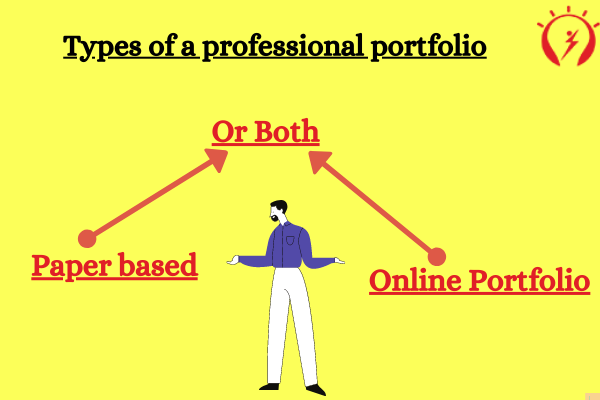
There are broadly two types of professional work portfolios:-
i. Paper-based portfolio
ii. Online portfolio
Students can also design in both formats.
How to introduce yourself in a professional portfolio?
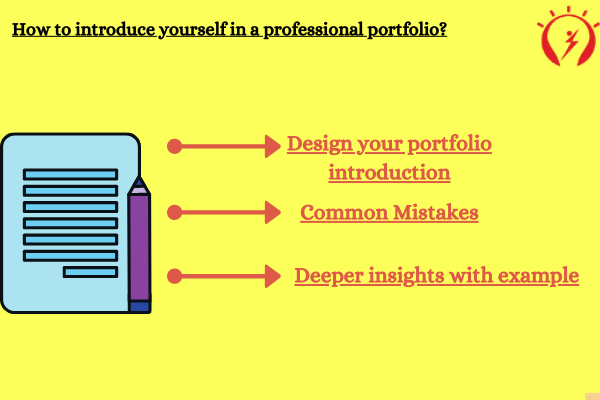
Another important question which arises while designing that important portfolio is a proper introduction. This is the first step while curating your professional work. You can take care of the few things while introducing yourself in that professional portfolio:-
i. Play around your skills.
ii. Don't use third-person voice.
iii. Avoid monotonous sentences. Take for example:-
Case 1.
I am John. I am a graphic designer and I have worked on freelance projects during my college. This opportunity provided me with hands-on experience to develop my skills. I feel that I will be a great addition to your organization.
Case 2.
My name is John and I am a graphic designer. Working on various freelance projects during college days enabled me to get hands-on experience in this field. Also, after interning withABC company, I got an exposure to the practical scenario of the industry. Hence, my motto as a Graphic designer is to curate compelling and user-centric designs for the respective audience.
Can you spot the difference between the two cases? Both of these communicate the same message. Yet, the articulation is different. While the case 1 is highly monotonous. On the other hand, case 2 attempts to communicate the same effectively. In this way, the recruiters get engaged by reading the very introduction. Thus, break the monotony and create a hook from one point to the other.
How to make the best use of a professional portfolio?
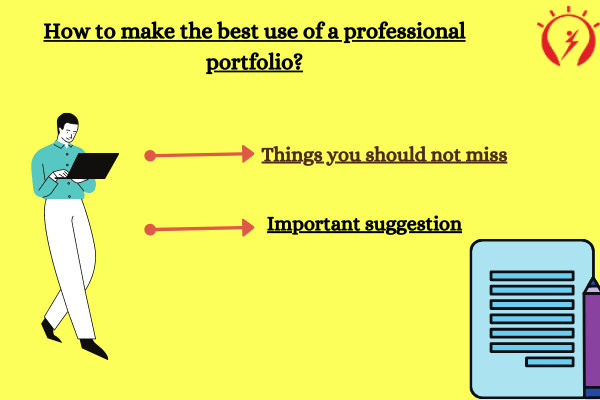
To make the best use of a professional portfolio, the candidate must back it with insightful resumes and cover letters. You may wonder why is it important? After all, now you are submitting an ultimate portfolio of your work?
We need to understand that a resume and a cover letter are like an introduction to your background. While a portfolio is a visual extension of your work. Both of it goes hand in hand. All these three elements act as a powerful interactive tool to communicate your expertise.
In fact, try using interactive resume templates for efficacy. In this way, you'll be able to design a profile-centric resume. For instance, AMCAT Resume Buddy offers wide-ranging templates according to your graduation background.
Befriend your ultimate Resume Buddy to design a compelling job application for your dream organization. Click Here to know more. You can either get your resume score based on its quality or get it creates as you desire.

Stepwise procedure to build a professional work portfolio
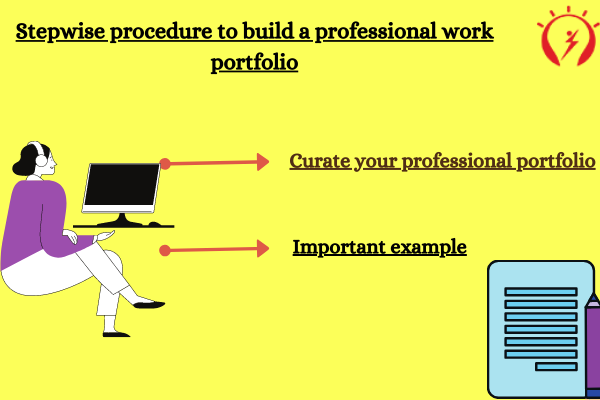
Here's how you can present a professional portfolio by following the stepwise procedure as described below:-
1st Step: Identify the nature of the job because every role has different requirement associated with it. Now, define a goal.
2nd Step: Collect your best work samples and present it on a common platform. There are many ways to do so. It essentially depends on the nature of your job.
Take a few examples for instance:-
i. Content Writing Portfolio- You will be expected to produce writing samples according to the niche. Maintaining a personal website can be helpful. There are other ways too. for example, you can maintain your blogs/journals on a common writing portal too. You can also club your best samples on a single platform/documents.
ii. Graphic Designers- Since this job employs designs, graphics and a lot of illustrations. Therefore, maintaining a portfolio is an integral part of getting a graphic designing job. You can maintain your work collection by using free tools such as Canva. Showcase your best designs by adding a summary of them.
iii. Web Designing/Development- Add your links and curate on an attractive platform.
In this way, you can curate your professional work portfolio according to the job opportunity.
3rd Step: Do not compromise on your resume either. Adding a cover letter can add a personal impact on the receiver. It is not a mandatory task though few companies keep it as one. However, attaching a cover letter can display your seriousness towards the job. A portfolio along with these two essentials completes your application in an effective manner. It brings clarity about your work.
Tips for a professional portfolio
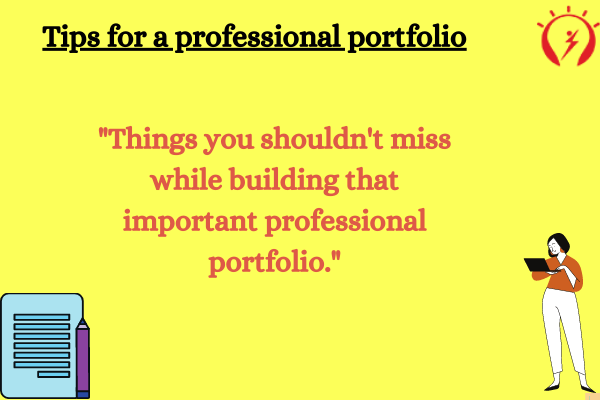
1. Design- Use customizable templates and curate it according to your requirements.
2. Digital Portfolio- How about maintaining your own website which contains your: portfolio, cover letter and resume on the common platform? You can take the help of templates or third party sites.
3. Fresher portfolio- Don't limit your chances just because you are a fresher. Showcase your internship work. You can add a project name or cultural activity participation too.
4. Declutter- No matter how detailed your work history may be, it needs to be structured and crisp. Avoid writing comprehensive descriptions until needed. Let your work speak louder than words.
5. Don't forget aesthetics-Your portfolio must be aesthetically sound and easy to navigate. It implicitly shows your attention to details. Therefore, in this way, it leaves a good impression on the recruiters too.
Now that you know every aspect of a portfolio, here is your chance to leave no stone unturned while applying for that important job.
All the best!
How To Create A Professional Portfolio
Source: https://www.myamcat.com/blog/success-tips/how-to-create-a-professional-portfolio/
Posted by: cundiffthaveling73.blogspot.com

0 Response to "How To Create A Professional Portfolio"
Post a Comment